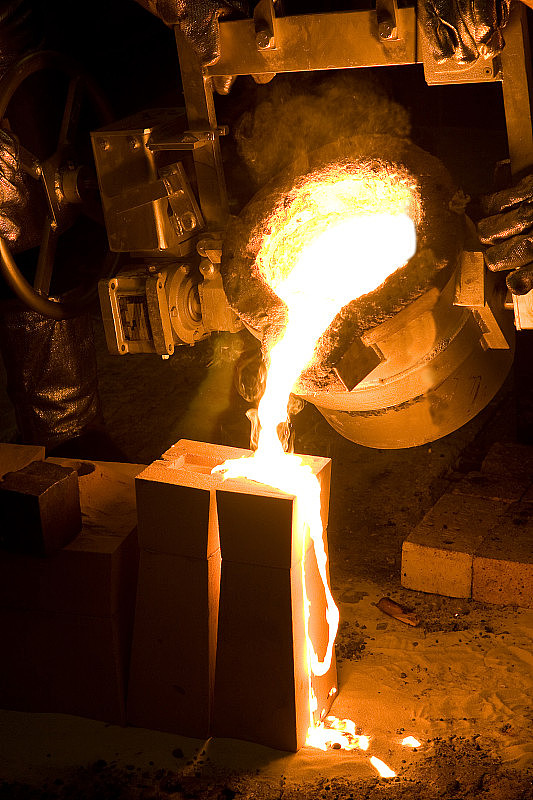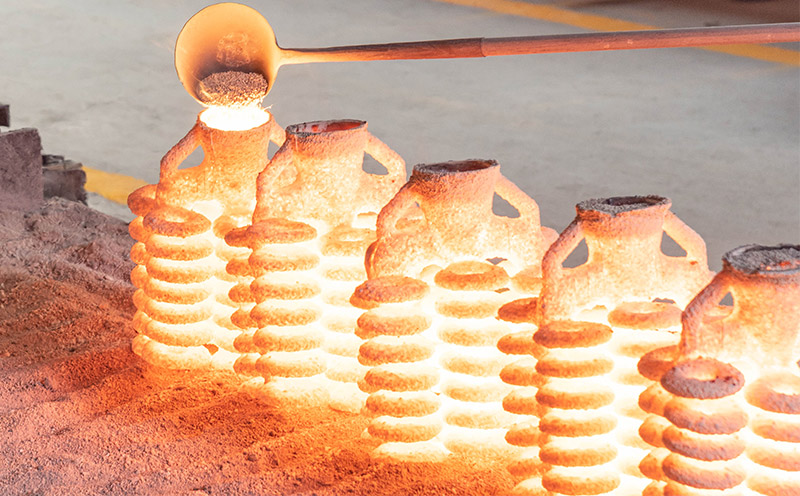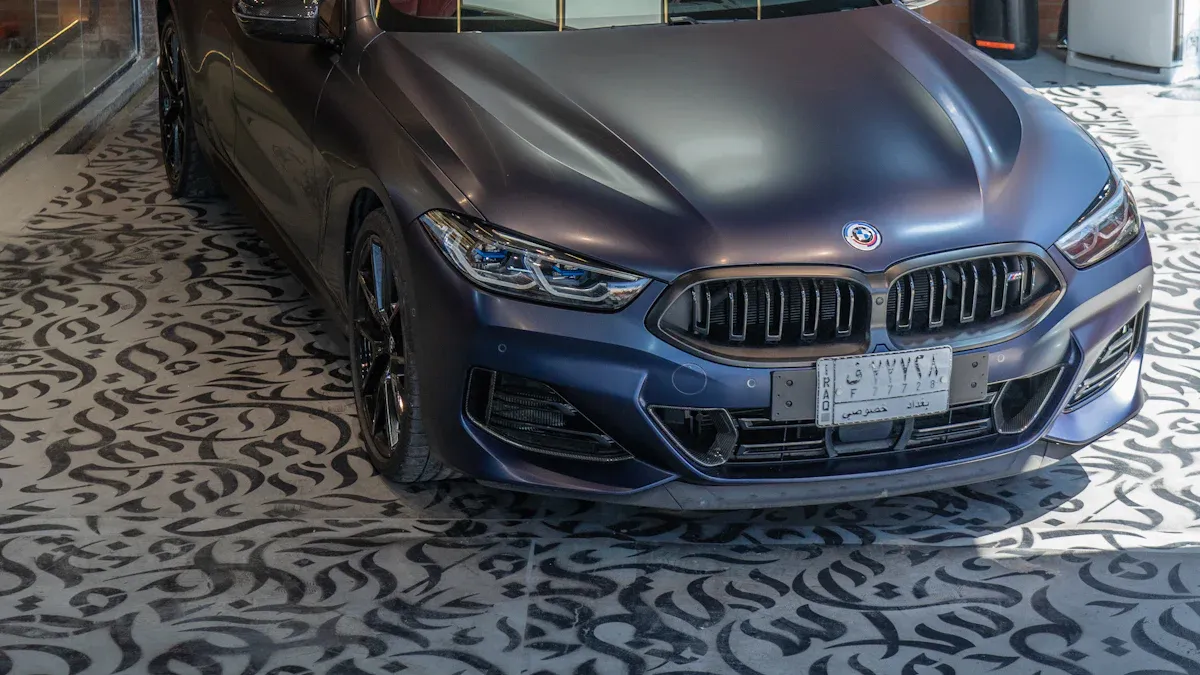
Tin bronze precision castings play a vital role in industries that demand durability and performance. Their ability to resist corrosion and endure extreme conditions makes them indispensable. For example:
- The marine industry relies on tin bronze for propellers and fittings that withstand seawater.
- Automotive manufacturers use it for bushings and bearings to ensure smooth operations.
- Industrial machinery benefits from its high-performance gears and valves.
Ningbo Pingheng Machinery Co., Ltd., a leading precision casting factory, has been at the forefront of innovation since 1999. They specialize in investment casting, producing intricate tin bronze components with minimal material waste. Their advanced processes and strict quality control ensure durable, corrosion-resistant parts that meet diverse industry needs.
Key Takeaways
- Tin bronze castings are important for boats, cars, and machines. They are strong and resist rusting.
- Robots and AI are changing casting by finding mistakes early. They also make production better, saving money and improving quality.
- Recycling and saving energy are now key in tin bronze casting. These steps cut waste and protect the environment.
Tin Bronze Precision Castings and Their Applications
Properties and Advantages of Tin Bronze
Tin bronze precision castings stand out due to their remarkable properties. Their high tensile strength allows them to endure significant stress without deforming, making them ideal for demanding applications. Additionally, their excellent elongation properties help absorb impacts, reducing the risk of fractures. This combination of strength and flexibility ensures reliability in critical components like automotive bushings and bearings.
Another key advantage is their resistance to environmental factors. Tin bronze can withstand exposure to moisture, chemicals, and temperature changes, preventing corrosion. This makes it a preferred choice for marine applications, where seawater corrosion is a constant challenge. Furthermore, the alloy’s hardness ensures that components maintain their shape and function over time, reducing wear and tear. This durability translates to fewer replacements and repairs, offering cost savings for manufacturers and consumers alike.
Applications Across Key Industries
Tin bronze precision castings play a vital role in several industries due to their strength, corrosion resistance, and thermal conductivity. For instance:
- In the marine industry, they are used for propellers and fittings designed to resist seawater corrosion.
- Automotive manufacturers rely on them for precision bushings and bearings that ensure smooth vehicle operation.
- Industrial machinery benefits from gears and valves engineered for high performance.
| Industry | Application Description |
|---|---|
| Marine Industry | Custom propellers and fittings designed to withstand seawater corrosion. |
| Automotive Sector | Precision bushings and bearings for smooth operation in vehicles. |
| Industrial Machinery | Gears and valves engineered for high-performance machinery. |
These applications highlight the versatility and reliability of tin bronze precision castings, making them indispensable across industries.
Automation and AI in Precision Casting

Enhancing Precision with AI
Artificial intelligence is transforming the way precision casting is done. By using AI and machine learning, manufacturers can predict defects before they happen. For example:
- AI algorithms analyze real-time data to identify potential issues like porosity defects.
- Studies show that convolutional neural networks (CNNs) can predict these defects with 94% accuracy.
This technology doesn’t just stop at defect prediction. AI also optimizes the casting process by adjusting variables like temperature and material composition in real time. These adjustments ensure uniform results and reduce waste. With AI, tin bronze precision castings achieve higher quality and reliability, making them even more valuable across industries.
Automation for Efficiency and Cost Reduction
Automation is another game-changer in precision casting. Robots and automated systems handle repetitive tasks like pouring molten metal and grinding, which speeds up production cycles. This consistency leads to uniform results and fewer errors. For instance:
- Automated systems maintain precise control over pouring parameters, preventing defects like air entrapment.
- Robots ensure even pouring and handle molds with high accuracy.
In addition, automated quality control systems inspect molds and castings for defects, ensuring only the best products move forward. Industry 4.0 technologies, such as IoT and digital twins, allow manufacturers to simulate and optimize production processes. These advancements not only improve efficiency but also reduce costs, making tin bronze precision castings more accessible to a wider range of industries.
Sustainability in Tin Bronze Precision Castings

Eco-Friendly Casting Practices
Sustainability has become a priority in tin bronze precision castings, with manufacturers adopting eco-friendly practices to reduce their environmental footprint. Companies like Ningbo Pingheng Machinery Co., Ltd. lead the way by implementing energy-efficient processes and refining mold designs. These efforts not only conserve energy but also lower production costs.
Recycling plays a significant role in sustainable casting. Leftover bronze from previous casts is melted down and reused, minimizing waste and reducing the need for raw materials. This approach supports a circular economy while maintaining high-quality standards. Additionally, using recycled copper and tin decreases reliance on mining, which helps conserve natural resources and cuts down on greenhouse gas emissions.
Cleaner technologies also contribute to sustainability. For instance, closed-loop water systems reduce water consumption, while energy-efficient machinery lowers carbon footprints. These innovations demonstrate how eco-friendly practices can align with operational efficiency.
Recycling and Waste Minimization
Recycling and waste minimization are essential strategies in tin bronze casting. Scrap materials, such as excess bronze, are repurposed to lower raw material costs and reduce environmental impact. Precision casting techniques further minimize material loss by ensuring consistent quality and reducing defects.
Optimized mold designs also play a key role. By refining casting techniques and using precise measurements, manufacturers can prevent unnecessary waste. These strategies not only enhance sustainability but also improve cost-effectiveness, making tin bronze precision castings a more viable option for industries worldwide.
Innovations in Tin Bronze Alloys
High-Performance Alloy Development
Advancements in alloy development are pushing the boundaries of what tin bronze precision castings can achieve. Engineers are now creating high-performance alloys tailored for specific applications. For example, alloys like MTEK 65 (C90700) and MTEK C90500 are designed for gears, bearings, and heavy-load applications. These alloys combine high copper and tin percentages to deliver exceptional strength and durability.
| Alloy | Copper (%) | Tin (%) | Applications |
|---|---|---|---|
| MTEK 65 | 89 | 11 | Gears, bearings, bushings |
| MTEK C90500 | 87 | 10 | Heavy load applications |
| MTEK C92300 | 87 | 8 | Valve guides, bearings |
These alloys also offer excellent corrosion resistance and thermal conductivity. This makes them ideal for industries like automotive, where reducing weight and improving fuel efficiency are critical. Tin bronze components are easier to machine than traditional materials, enabling precise designs that enhance performance. Their durability minimizes maintenance needs, saving time and money for end users.
Customization for Industry Needs
Customization has become a cornerstone of tin bronze alloy innovation. Manufacturers work closely with clients to design components that meet specific requirements. This includes selecting the right alloy composition, determining dimensions, and incorporating unique features.
Some popular customization options include:
- Special Chamfers: These improve the fit and reduce wear.
- Grooves: Machined grooves enhance lubrication and extend component lifespan.
- Rings: Custom rings provide better alignment and stability.
- Surface Treatments: Coatings and heat treatments boost durability and performance.
Industries like marine, automotive, and aerospace benefit greatly from these tailored solutions. For instance, the marine sector uses tin bronze for corrosion-resistant propellers, while aerospace relies on lightweight yet strong components for safety and efficiency. Customization ensures that tin bronze precision castings meet the unique demands of each industry.
Technological Advances in Precision Casting
3D Printing in Mold Design
3D printing has revolutionized mold design in precision casting. This technology allows manufacturers to create intricate and complex molds that traditional methods simply cannot achieve. It enhances design flexibility, enabling engineers to experiment with innovative shapes and structures. Additionally, 3D printing significantly reduces lead times, making it possible to produce molds faster than ever before.
- High precision and customization in mold making.
- Rapid prototyping and design iterations without costly tooling changes.
- Significant reduction in time and cost for mold production.
| Advantage | Description |
|---|---|
| Increased Design Flexibility | 3D printing allows for more intricate designs that traditional methods cannot achieve. |
| Reduced Lead Times | Faster prototyping and production processes lead to quicker turnaround for casting projects. |
| Cost-Effectiveness | Lower costs in mold production, especially for low-volume runs, due to reduced material waste. |
| Complex Geometries | Ability to create shapes that are difficult or impossible with conventional techniques. |
Advanced Quality Control Techniques
Advanced quality control techniques ensure the reliability and precision of tin bronze precision castings. Manufacturers now use cutting-edge methods to maintain high standards. For instance, pattern inspection checks wax patterns for dimensional accuracy and surface imperfections. Shell integrity testing ensures ceramic shells are defect-free through visual and non-destructive testing.
Other techniques include metal quality control, which uses spectroscopy to verify the chemical composition and purity of the metal. Post-casting inspections involve dimensional and surface testing to confirm the final product meets specifications. Artificial intelligence and IoT further enhance quality control by monitoring critical parameters in real-time and predicting potential defects.
- Adherence to international standards like ISO 9001 demonstrates a commitment to quality.
- Continuous monitoring during production reduces defects and ensures consistency.
- Non-destructive testing methods maintain the integrity of the castings.
These advancements guarantee that tin bronze precision castings meet the highest industry standards, offering reliability and durability across various applications.
Challenges and Opportunities in 2025
Overcoming Cost and Resource Barriers
The tin bronze precision casting industry faces several challenges related to costs and resource management. High initial material costs often pose a barrier, as bronze’s superior mechanical properties and corrosion resistance make it more expensive than alternatives. However, manufacturers can address these challenges by improving process efficiency and adopting waste reduction strategies. Recycling scrap materials, for instance, not only lowers raw material costs but also minimizes environmental impact.
Energy efficiency is another critical factor. Optimizing operations to reduce energy consumption can significantly cut production costs. Companies like Ningbo Pingheng Machinery Co., Ltd. have already implemented advanced technologies to streamline casting processes, ensuring minimal waste and maximum throughput. These efforts not only enhance sustainability but also make tin bronze precision castings more cost-effective for a broader range of industries.
| Cost Factor | Description |
|---|---|
| Material Selection | Higher initial costs for bronze due to its mechanical properties and corrosion resistance. |
| Process Efficiency | Streamlining casting processes reduces costs by minimizing waste and improving throughput. |
| Waste Reduction | Recycling scrap materials lowers raw material costs, addressing resource barriers. |
| Energy Efficiency | Optimizing operations to reduce energy consumption can lower overall costs. |
Growth Opportunities in the Tin Bronze Market
The tin bronze market is poised for significant growth in 2025, driven by its expanding applications across various industries. The material’s versatility makes it ideal for architectural parts, musical instruments, industrial components, and transportation systems. Its aesthetic appeal and sustainable properties further boost its demand.
Several factors contribute to this growth:
- Expanding applications in the marine industry, where corrosion resistance is crucial.
- Increasing demand from the construction sector, which values bronze for its durability and visual appeal.
- Use in musical instruments, where its acoustic properties shine.
- Rising demand in the aerospace sector, fueled by population growth and regional conflicts.
The market also benefits from segmentation by alloy types, such as aluminum bronze, manganese alloy, and silicon bronze. This diversification allows manufacturers to cater to specific industry needs, ensuring continued innovation and market expansion. With these opportunities, companies like Ningbo Pingheng Machinery Co., Ltd. are well-positioned to lead the way in delivering high-quality, customized solutions.
Emerging trends in tin bronze precision castings focus on strategic planning, alloy selection, and streamlined workflows. These advancements enhance performance, reduce costs, and meet diverse industry needs. The future looks promising, with innovations like lightweight designs and improved machining setting new standards in automotive and industrial applications.
Ningbo Pingheng Machinery Co., Ltd. plays a pivotal role in this growth. Their expertise in recycling, energy-efficient solutions, and data-driven quality control ensures high standards and adaptability. By delivering reliable and sustainable casting solutions, they continue to lead the industry forward.
FAQ
What makes Ningbo Pingheng Machinery Co., Ltd. a leader in tin bronze precision casting?
Their expertise in investment casting ensures high-quality, durable components. Advanced technology, strict quality control, and eco-friendly practices set them apart from competitors.
How does tin bronze compare to other materials in precision casting?
Tin bronze offers superior corrosion resistance, strength, and durability. These properties make it ideal for demanding applications in marine, automotive, and industrial sectors.
Can tin bronze castings be customized for specific industries?
Yes! Ningbo Pingheng Machinery Co., Ltd. specializes in tailored solutions. They design components with unique features like grooves, chamfers, and coatings to meet industry-specific needs.
